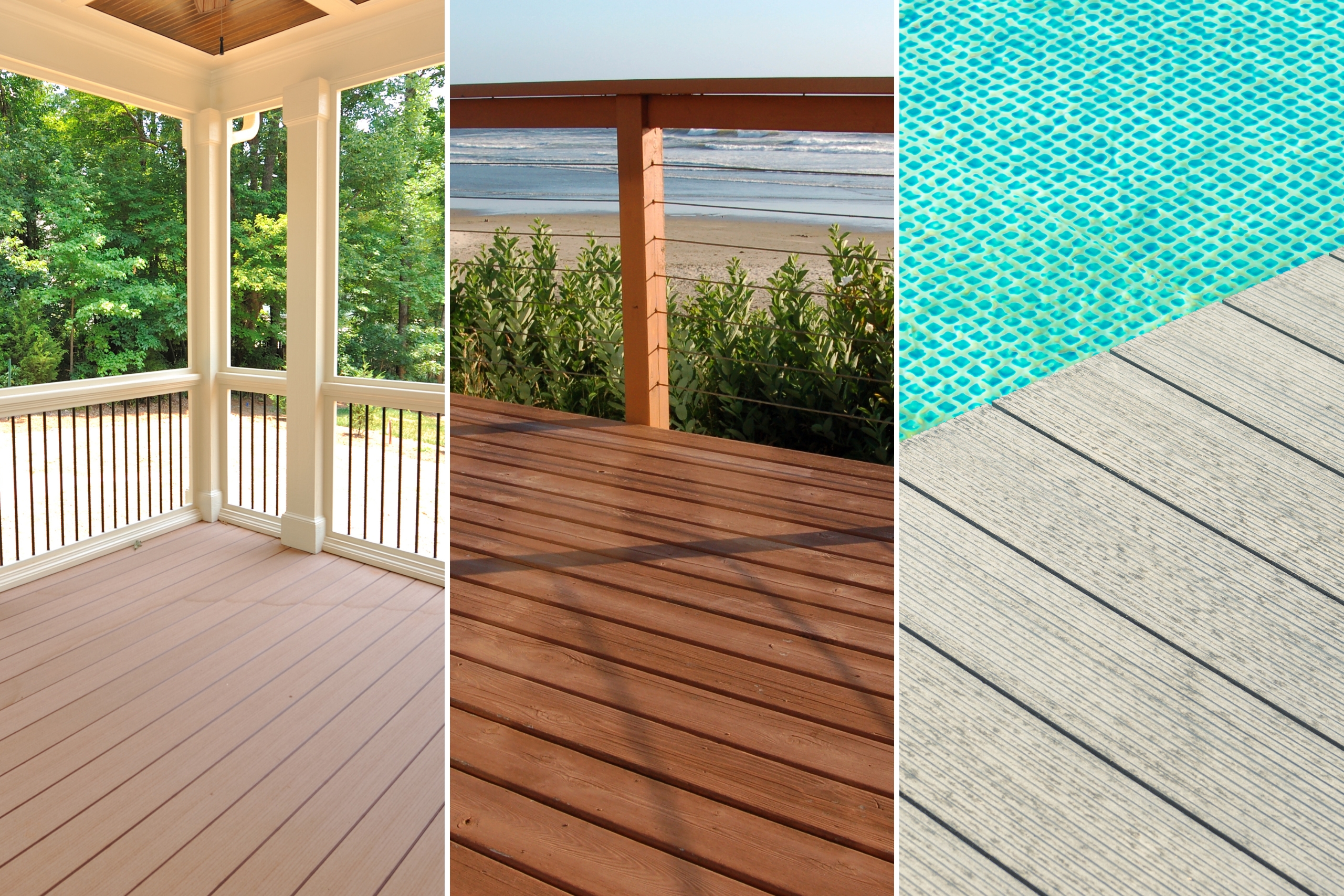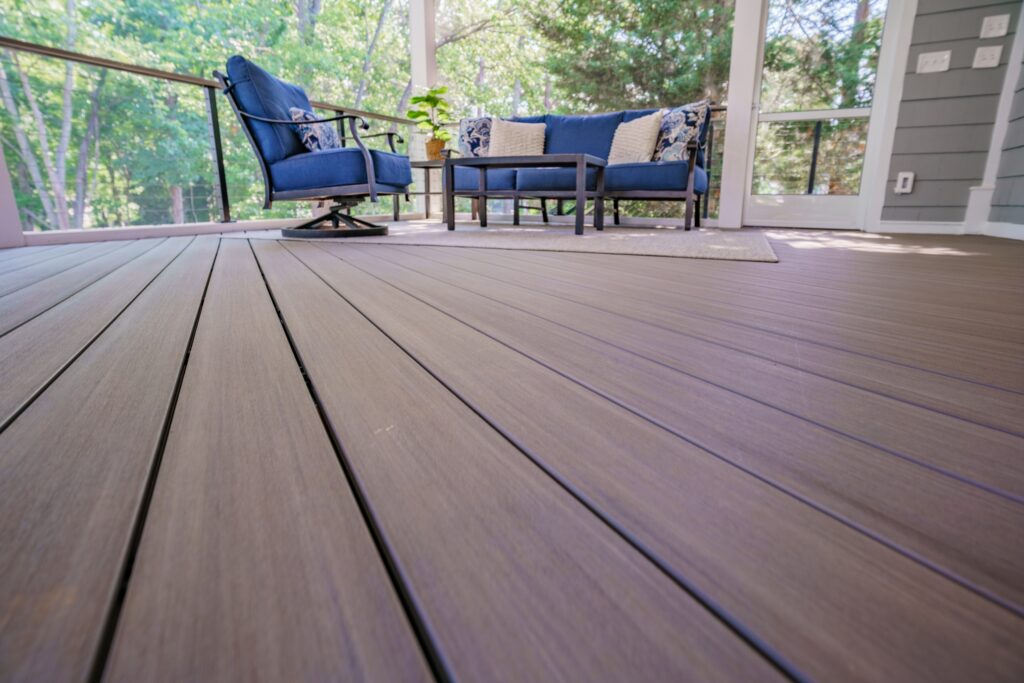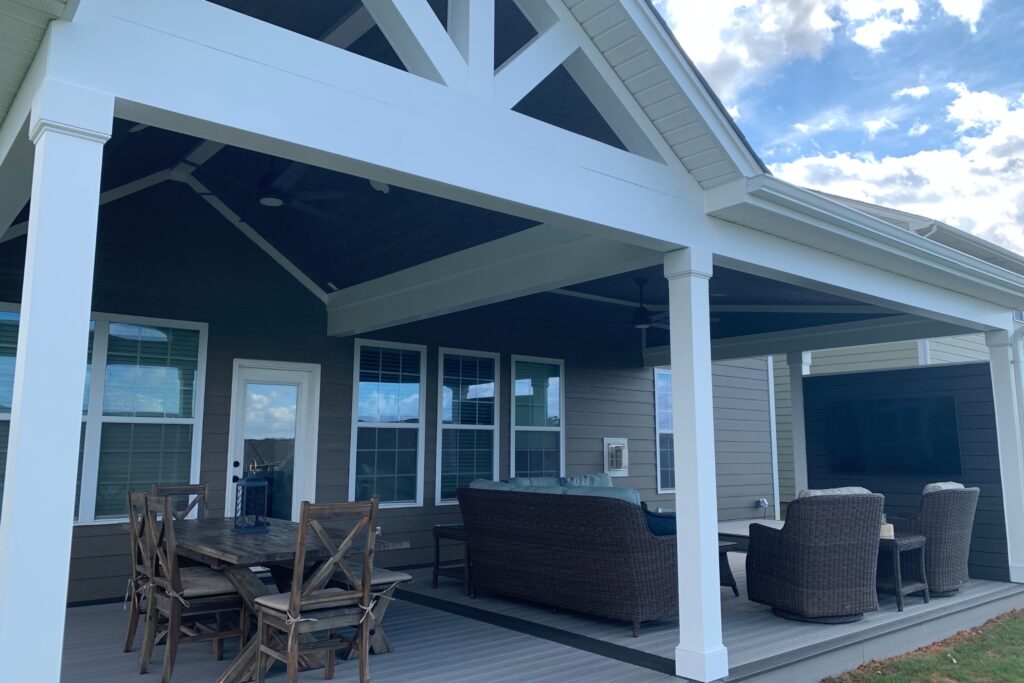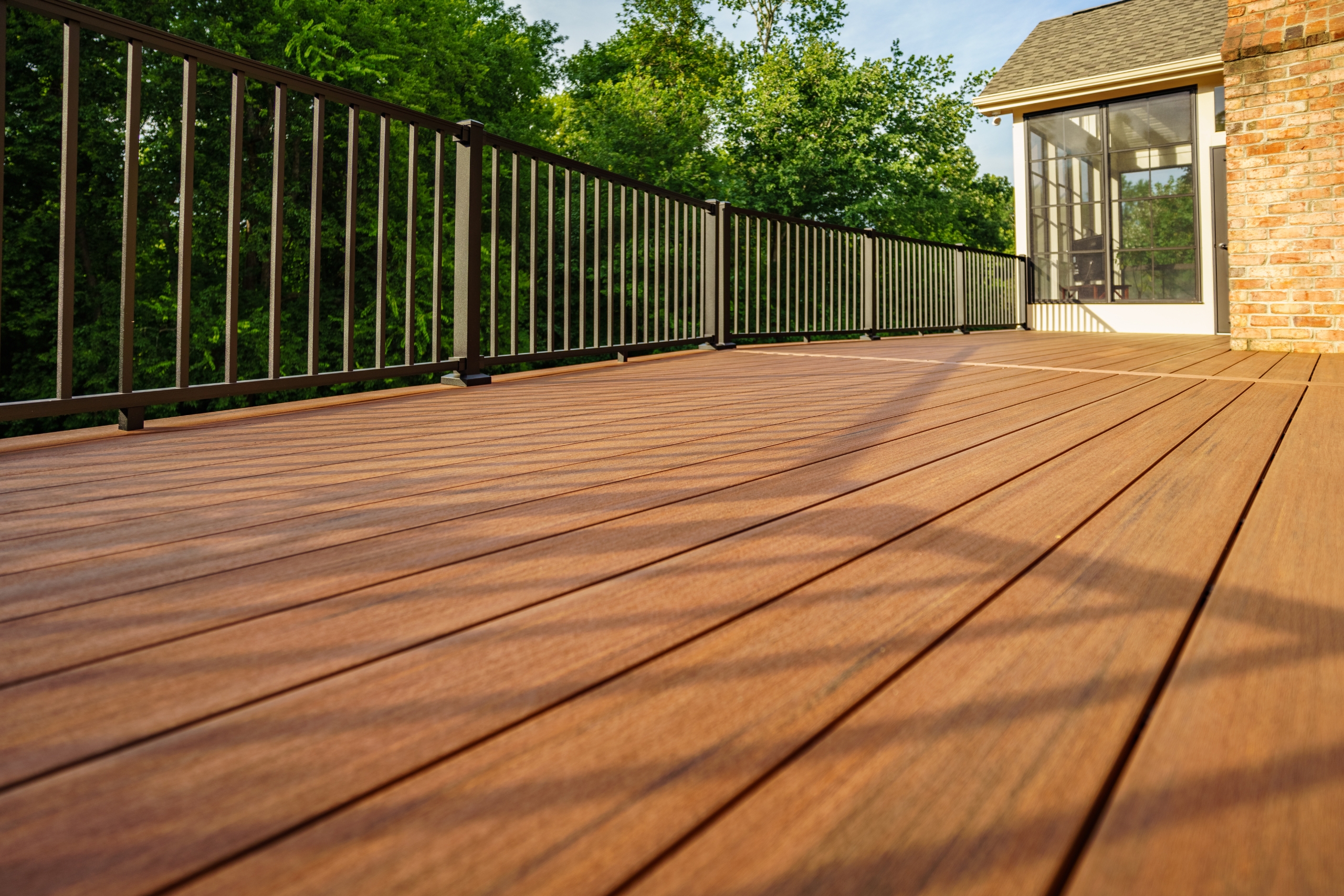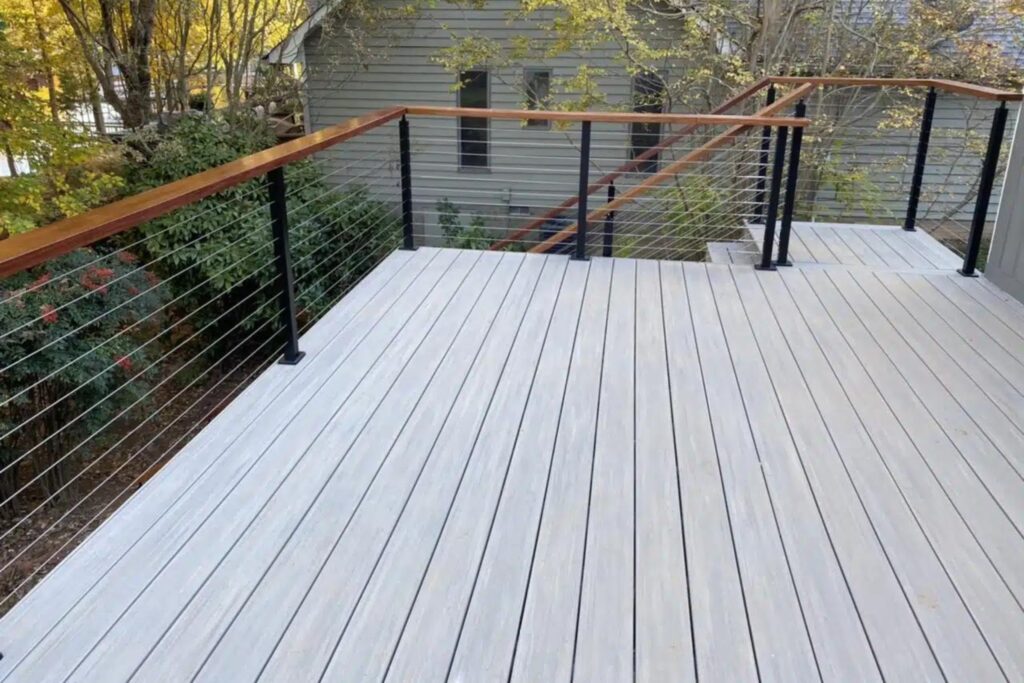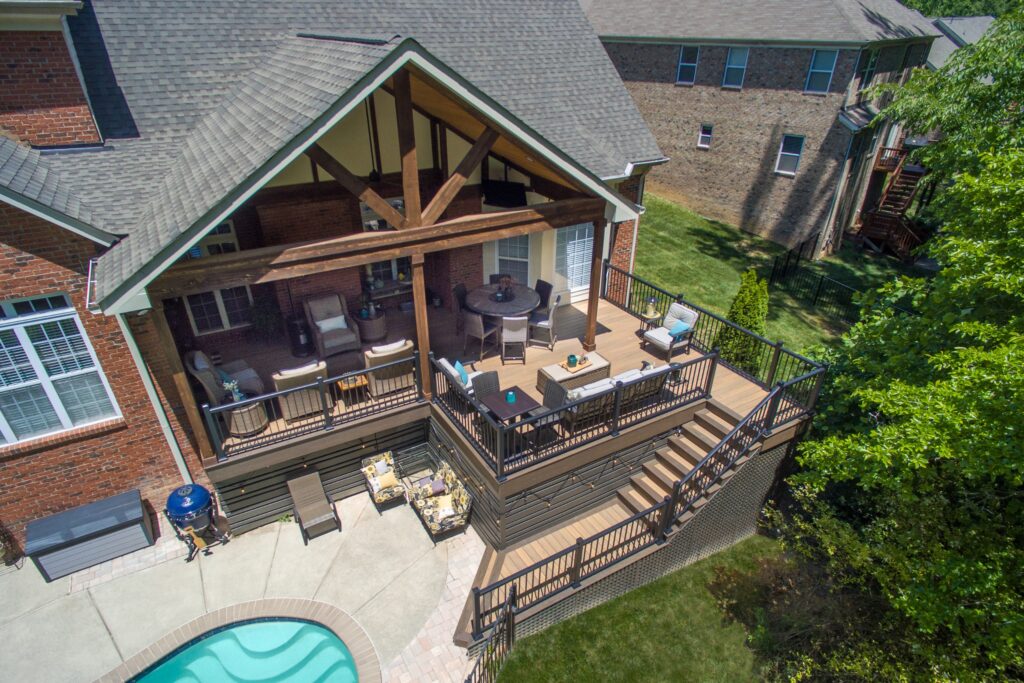Many homeowners are curious about what decking material makes the most sense for their deck design and build projects. We’ve compiled a helpful guide to break down the differences between the three most common deck types: Wood, Composite (our favorite), and PVC decking.

Wood Decking
Wood decking typically refers to pressure-treated deck boards. Pressure-treated lumber is treated to extend its useful life and protect against wood rot, but it’s still far less efficient than manufactured decking. Although it’s considered one of the most affordable deck materials to build with, it is important to consider how long-term maintenance costs add up.
| Wood Decking: Pros | Wood Decking: Cons |
| – Typically more affordable up-front * – Authentic wood look and texture | – Requires regular maintenance for safety and aesthetics – Less durable than manufactured products – Limited design options – No manufacturer warranties |
Composite Decking
Composite decking refers to manufactured deck boards. Specific material blends may vary between manufacturers, but typically they consist of a blend of an organic reclaimed wood product (like sawdust or wood fibers) and recycled plastics. The final product is an extremely durable (and sustainable!) deck board. Manufacturers offer warranties between 25-50 years on most composite decking products.
| Composite Decking: Pros | Composite Decking: Cons |
| – Lower lifetime costs due to minimal maintenance – Durable and long-lasting* – Resistant to water and sun exposure – Variety of color and texture choices to choose from – Allows for unique designs | – Higher up-front cost – Not as natural-looking as real wood |
PVC Decking
PVC decking, unlike the composite decking recommended by Carolina Decks, is made entirely of plastic and contains no wood fibers. This makes it completely waterproof and resistant to rot, mold, and insects. PVC decking is a popular choice for outdoor applications like decks, patios, and around pools because of its low-maintenance nature. However, unlike capped composite decking, PVC decking may not offer the same level of color variety or realistic wood finishes.
| PVC Decking: Pros | PVC Decking: Cons |
| – Durable and long-lasting with minimal maintenance – Weather resistant – Premium color and texture selections – Allows for versatile deck designs | – Highest up-front cost – Low-quality or outdated PVC may be slippery or retain heat build-up* |
If you have any questions or want to schedule a consultation for your project, contact Carolina Decks today for a free estimate! Our expert team will be happy to answer any questions about deck types and make sure you feel confident in your decision.


